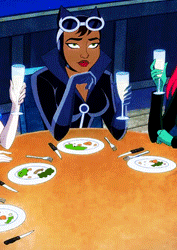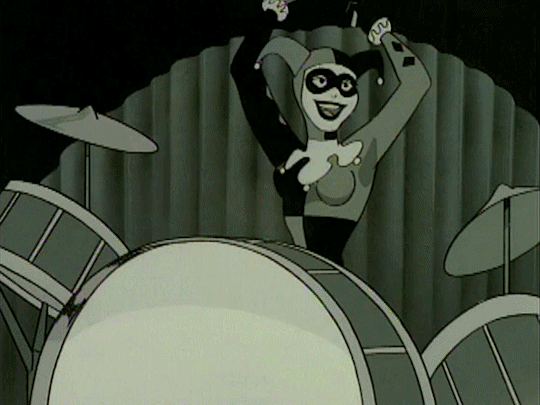Don't wanna be here? Send us removal request.
Text
Reading Notes 10: Said to Shohat and Stam

To wrap up our studies of visual analysis, Edward W. Said’s “Orientalism” and Ella Shohat and Robert Stam’s “Stereotype, Realism, and the Struggle Over Representation” provide critical paths to understanding the roles of race and representation play in our production and consumption of film, television, and popular culture.
How is orientalism linked to film, television, and popular media, and in what ways has standardization and cultural stereotyping intensified academic and imaginative demonology of “the mysterious Orient” in these mediums?
What role do stereotypes play in the representation of people, and in what ways can film and television change the perception of cultural misrepresentation?
@theuncannyprofessoro
16 notes
·
View notes
Text
Reading Notes 9: Halberstam to Hall

Jack Halberstam’s “Looking Butch: A Rough Guide to Butches on Film” and Stuart Hall’s “What is this ‘Black’ in Black Popular Culture?” link our inquiries into gender and sexuality with race and representation.
What examples of “positive images” of marginalized peoples are in film and television, and how can these “positive images” be damaging to and for marginalized communities?
In what ways is (popular/visual) culture (performance) a complicated and political site where various identities are negotiated, and how can cultural strategies make a difference and shift dispositions of power?
@theuncannyprofessoro
16 notes
·
View notes
Text
Reading Notes 8: Lorde to Butler

In our continued discussions, Audre Lorde’s “The Master’s Tools Will Never Dismantle the Master’s House” and “Age, Race, Class, and Sex: Women Redefining Difference,” and Judith Butler’s Gender is Burning: Questions of Appropriation and Subversion” provide further introspection into systems and definitions of gender and sexuality.
How do power and privilege impact the relations people have with each other and with institutions, and how can we acknowledge, examine, and remedy oppression and marginalization using oppressive and marginalized systems?
How do cultural, societal, and media representations support gender performativity and in so doing complicate gender norms, and in what ways is heterosexuality a performance?
@theuncannyprofessoro
17 notes
·
View notes
Text
Reading Notes 7: Mulvey to hooks

Shifting our visual analysis and critical inquiries to gender and sexuality, we will begin our explorations with Laura Mulvey’s “Visual Pleasure and Narrative Cinema” and bell hooks’s “Oppositional Gaze: Black Female Spectators.”
How does the spectacle of the female image relate to patriarchal ideology, and in what ways do all viewers, regardless of race or sexuality, take pleasure in films that are designed to satisfy the male gaze?
How do racial and sexual differences between viewers inform their experience of viewing pleasure, and in what ways does the oppositional gaze empower viewers?
@theuncannyprofessoro
17 notes
·
View notes
Text
Reading Notes 6: Freud to Lacan to Fanon

We look to Sigmund Freud’s “The Uncanny,” Jacques Lacan’s “The Mirror Stage as Formative of the Function of the I,” and Frantz Fanon’s “The Negro and Psychopathology” for our inquiry into the functions of psychoanalysis and subjectivity when examining visual texts.
Why do people call an experience or event uncanny, and what makes an occurrence that appears to be uncanny but is not uncanny?
What is the relation of personal neurosis to social passions?
In what ways are oppressed and marginalized viewers alienated when they are not or rarely represented?
@theuncannyprofessoro
18 notes
·
View notes
Text
Reading Notes 5: Baudrillard to Jameson

To further our studies in visual analysis, Jean Baudrillard’s “Simulacra and Simulations” and Fredric Jameson’s “Postmodernism and Consumer Society” offer guidance to understanding the roles of poststructuralism and postmodernism.
What are the four successive phases that break down an image?
What is the relationship of parody to the object it mocks, and at what point does parody become impossible and pastiche appear?
@theuncannyprofessoro
17 notes
·
View notes
Text
Reading Notes 4: Metz to Deleuze

Christian Metz’s “Some Points in the Semiotics of the Cinema” and Giles Deleuze’s “Introduction: Repetition and Difference” transitions our inquiry from semiotics and structuralism to poststructuralism and postmodernism.
How are connotations used to signify style, genre, symbol, or poetic atmosphere in film?
How is repetition different from generality, and how is repetition different from resemblance?
@theuncannyprofessoro
13 notes
·
View notes
Text
Reading Notes 3: Saussure to Barthes

In “Course in General Linguistic” and “Mythologies,” Ferdinand de Saussure and Roland Barthes set the groundwork for our studies in semiotics and structuralism.
What is the arbitrary nature of the sign, how is the sign differentiated from a symbol, and why is language the most characteristic of all sign systems?
In what ways is myth a semiological system?
@theuncannyprofessoro
17 notes
·
View notes
Text
Reading Notes 2: Horkheimer and Adorno to Hall

Max Horkheimer and Theodor Adorno in “The Culture Industry as Mass Deception” and Stuart Hall in “Encoding, Decoding” continue our exploration of ideology and culturalism.
What makes the culture industry an industry, and how does the technology of the culture industry become a rationality of domination?
What is encoding, what is decoding, and what is the distinction between discourse and language?
@theuncannyprofessoro
14 notes
·
View notes
Text
Reading Notes 1: Marx and Engels to Althusser to Benjamin

In “The Ruling Class and The Ruling Ideas,” “Ideology and Ideological State Apparatuses,” and “The Work of Art in the Age of Mechanical Reproduction,” Karl Marx and Frederick Engels, Louis Althusser, and Walter Benjamin, respectively, provide insight on our introduction to ideology and culturalism.
What is the division of mental and material labour and how does it manifest in society?
What is the relationship between the state apparatus and the ideological state apparatuses?
How have the processes of reproducing works of art changed over time, and how have changes in reproduction altered the relationship between a piece of art and its “original” object?
@theuncannyprofessoro
20 notes
·
View notes
Link
16 notes
·
View notes
Link
14 notes
·
View notes
Link
17 notes
·
View notes
Link
18 notes
·
View notes
Link
15 notes
·
View notes
Link
15 notes
·
View notes
Link
17 notes
·
View notes